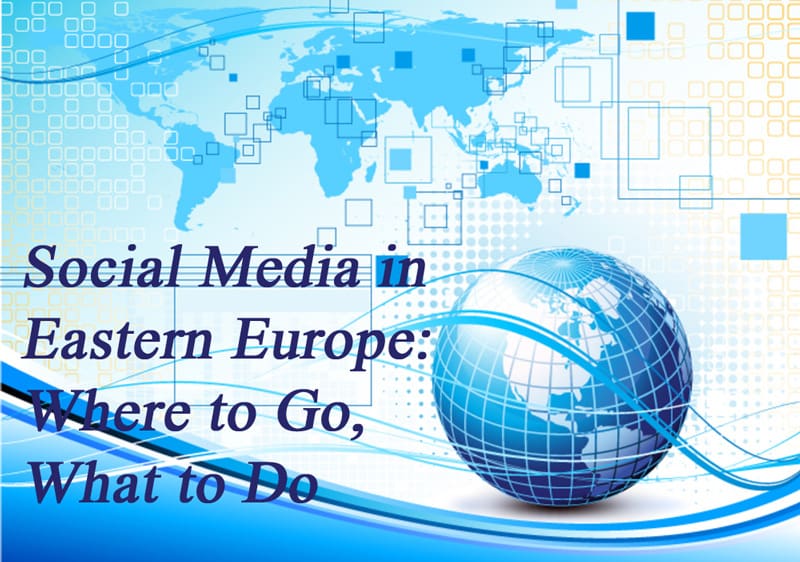Due to intensive globalization it is becoming more and more desirable to spread your business abroad. Worldwide internet availability has offered a wonderful opportunity #opportunity to expand your marketing influence to areas you have never even dreamed of.
Social media #socialmedia can be used as a suitable tool to make your internet marketing more human; however, in this case you will need to take into account the local specifics of social media.

This post will acquaint you with useful considerations regarding social media marketing in Eastern Europe. For a long time this part of the world was a mysterious area for Western business.
Nevertheless, the closed era of the Soviet Union passed more than two decades ago, and Eastern Europe is becoming more modern, more progressive, and much friendlier for business. Naturally, this has great effects on internet activity.

***
Worldwide networks
Facebook
Facebook is known everywhere, and Eastern Europe is no exception. However, it’s not the monopolist there that it is in the United States, and in some areas, especially in Russia and other more eastern parts of the region, local equivalents are preferred.

Social media’s primary aim is communication, and Facebook wins the communication matchup due to the user base it offers: people on Facebook can connect with anyone from anywhere. Moreover, this tendency concerns their relations with marketing: Eastern Europeans on Facebook are more open to foreign brands.
Twitter

The first one is the expansion of smartphone #smartphone use in Eastern Europe. Yes, the mobile net boom has already reached this region, and Eastern Europeans have massively begun to connect to Twitter, which is perfect for smartphones due to its 140-word–message concept.
The other reason people choose Twitter is the same as the main motivation for Facebook usage, i.e. Eastern Europeans are eager to communicate with foreigners and integrate into the global #global cultural space. Finally, Twitter is a great opportunity to follow local celebrities, politicians, and other famous persons.

YouTube
In modern audio-visual culture people like watching videos and usually prefer them to text information. It’s quite reasonable, because videos are much more comfortable to absorb. Eastern Europeans, like fellow American social networkers, also prefer video content.
The significant popularity of YouTube in the region proves this thesis. YouTube advertising #advertising in Eastern Europe is not very different from YouTube advertising elsewhere: you need to create a catchy commercial and put it online so people can watch it, like it, and promote it on their own.

LinkedIn
People do not use LinkedIn much in Eastern Europe, and the main reason stems from a certain degree of business isolation and feeble job connections with the rest of the world.
It would be an injudicious decision to promote your products and brand in this network directly, however LinkedIn can help you find English-speaking local marketers that will help you prepare a social media campaign taking into consideration the specifics of the region.

Though Google+ is rapidly growing internationally, it is not so widespread in Eastern Europe. There is really no way for successful marketing on this network, except possibly some weak promotion through local communities.
But remember that your linking should not contain even a hint of commerciality. Google doesn’t like it and people in Google+ communities don’t like it either, so you’ll just risk being stigmatized as a spammer.
Local networks
VK.com (Vkontakte)
VK.com (formerly known as “Vkontakte”) has grown from the small private network for Moscow students it started out as. But the epoch dictated its will and VK.com was transformed into a massive social media mecca.

VK.com offers a wide variety of opportunities for marketing through paid ads. Also, there is a wide practice of buying promotional posts on popular public entertainment pages—in this case you should get in touch with the page administrator and make an arrangement directly.
Odnoklassniki
This Russian social media site is another example of local social media. Odnoklassniki translates as “classmates,” and the main concept of this website is looking for old schoolmates and friends.

***
Now that you have some basic knowledge about social media in Eastern Europe, you can start planning your SMM campaign for the region. In the case that you already have some experience in this field, we welcome you to express your opinions in the comments.
